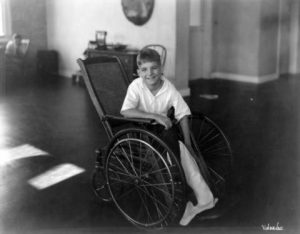You can learn a lot about American life and culture in past decades by viewing public health reports. Here in Colorado, the State Board of Health began serving — and keeping statistics on — Coloradans in 1876. Today, the agency now known as the Colorado Department of Public Health and Environment still maintains the state’s vital statistics office (birth, death, etc. records) along with studying and reporting on communicable diseases, epidemiology, healthcare practices, health trends, needs of special populations, and more. Today let’s look at the state of health in Colorado 80 years ago, as seen through the Annual Report of the State Board of Health, which has been digitized by our library.
Back in 1937, the state’s public health agency focused on various topics, some of which are still important to us today, such as Maternal and Child Health, and some which are no longer as much of a concern, such as tuberculosis. In the late nineteenth and early twentieth century, tuberculosis was a major public health issue throughout the United States, and thousands flocked to Colorado for what was known as the “climate cure.” Scientific treatment methods for tuberculosis, however, didn’t really become successful until after WWII. Therefore, the 1937 report includes considerable discussion on efforts to control tuberculosis.
The report also shows that wastewater was a significant public health concern in 1937, especially in rural areas where plumbing standards were still low. In 1937 the health department included both a “Division of Sanitary Engineering” and a “Division of Plumbing,” the latter division working to “raise the standard of sanitation and thereby protect the public against installations which are a menace to their health and safety.” They investigated 104 complaints that year.

Another area of emphasis in the 1937 report was what they then referred to as “crippled children.” This was, of course, prior to the development of the polio vaccine and other medical advances; therefore, 1,332 children were reported as being “crippled” in Colorado in 1937.
Much of the 1937 report contains statistics, such as morbidity rates; health services provided to the public; communicable diseases; birth and death data; and more. For additional reports and statistics on the state of public health in Colorado throughout its history, search our online catalog.
Photo courtesy Denver Public Library Western History & Genealogy Department
- How to Spot the Differences Between Eagles and Hawks - August 16, 2021
- How Transportation Projects Help Tell the Story of Colorado’s Past - August 9, 2021
- Time Machine Tuesday: The Night the Castlewood Canyon Dam Gave Way - August 3, 2021